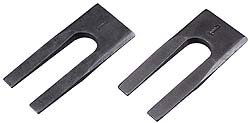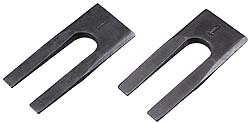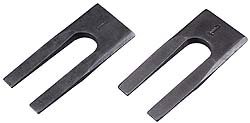- Joined
- Apr 6, 2011
- Messages
- 2,082
Looking for some suggestions about how to deal with a little issue I'm having with Colt. I need to remove the mule ears to repair a broken spring on one and to replace both the "ears". As you can see, someone in the past has "repaired" it before and left it with mis-matched hammers.
I have a matched set of the correct Colt hammers to replace them with but the hammers are on tight. The small hex nuts that are "holding them on" come off easily enough and the threads are fine but it seems that they are almost pressed on.
There are a few thousandths between the hammers and the side plates but not enough to get a real puller under there. I've considered trying thin strips of brass to make a "basket" around the post and yank on it but would rather hear some better ideas. I'd really, really like to avoid jazzing up the side plates any more than they are.
Note: Yes, I know it's a damascus barrel and no I don't plan on shooting it. (Well, not unless I have it checked out and also make some blackpowder loads for it. )
)
Any ideas?
Thanks,
-Ron
I have a matched set of the correct Colt hammers to replace them with but the hammers are on tight. The small hex nuts that are "holding them on" come off easily enough and the threads are fine but it seems that they are almost pressed on.
There are a few thousandths between the hammers and the side plates but not enough to get a real puller under there. I've considered trying thin strips of brass to make a "basket" around the post and yank on it but would rather hear some better ideas. I'd really, really like to avoid jazzing up the side plates any more than they are.
Note: Yes, I know it's a damascus barrel and no I don't plan on shooting it. (Well, not unless I have it checked out and also make some blackpowder loads for it.
Any ideas?
Thanks,
-Ron




